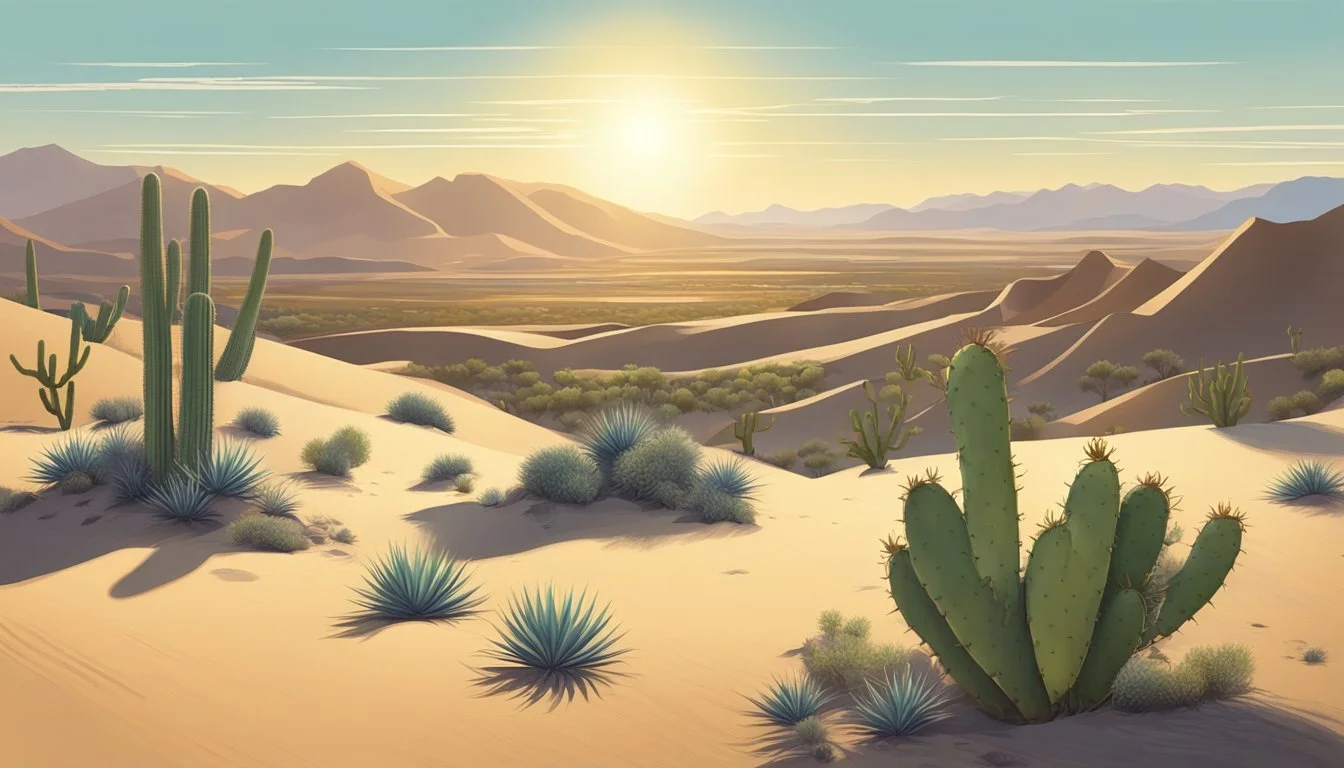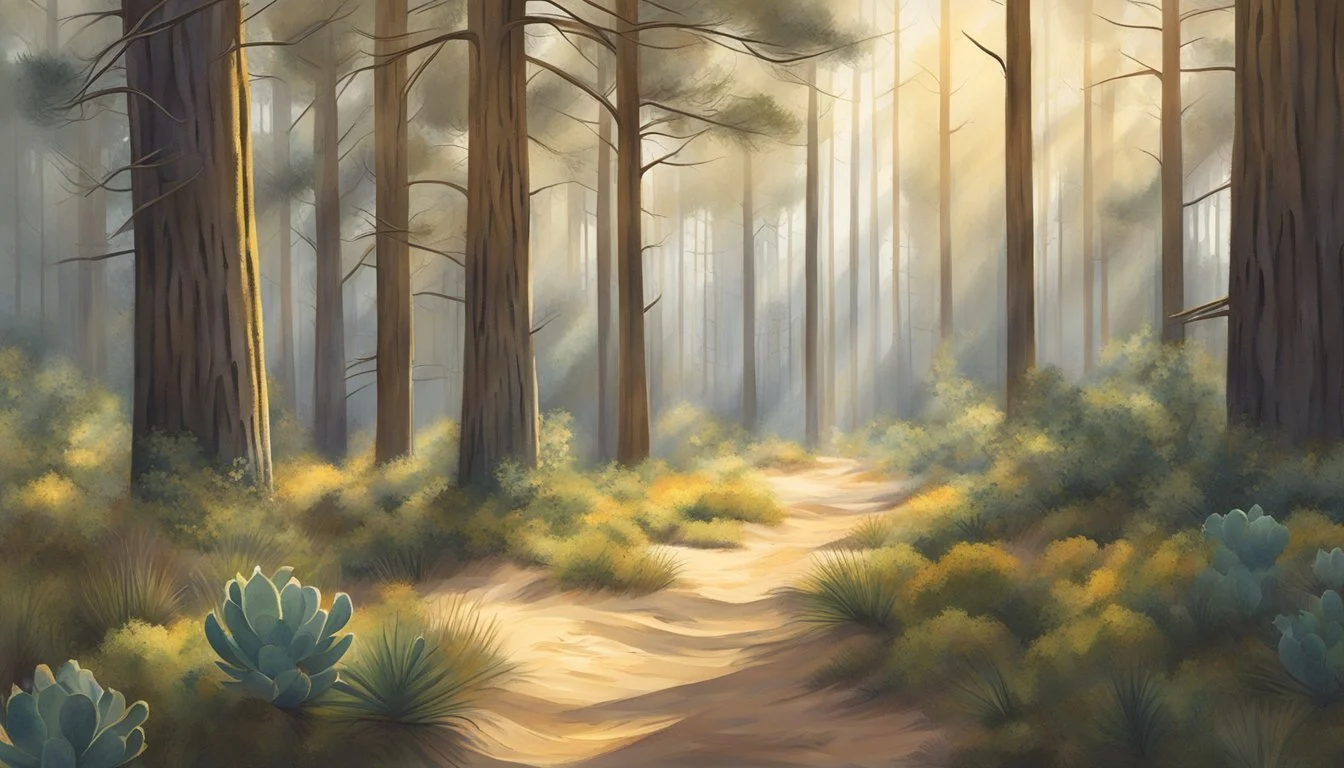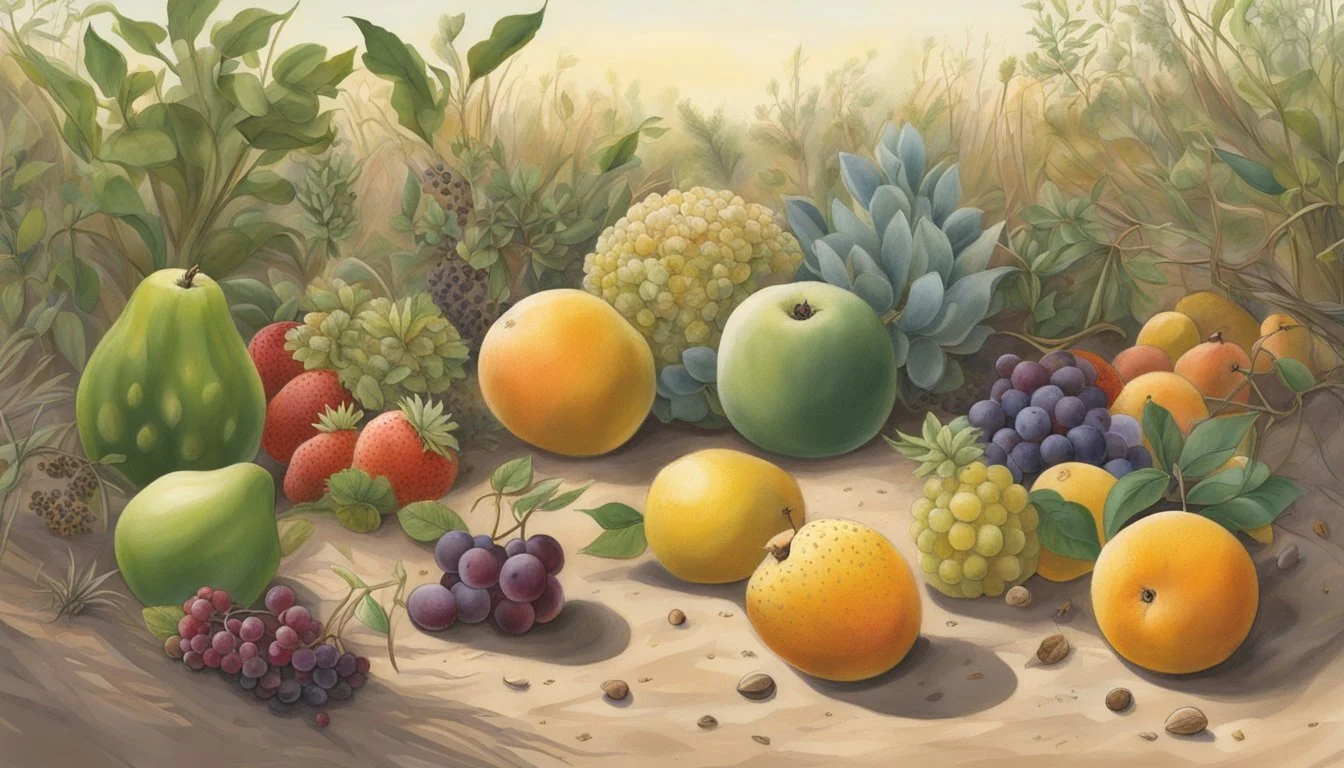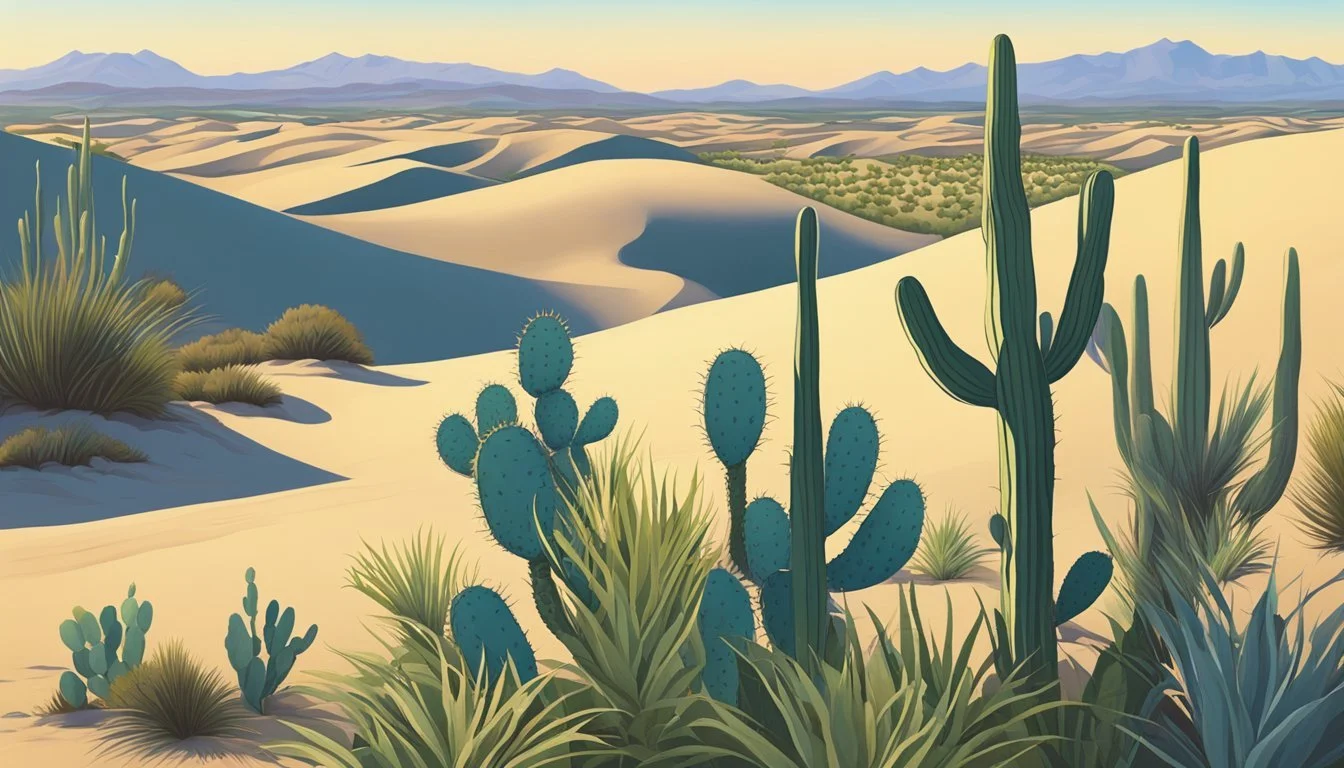Sandhills Native Edible Plants
A Guide to Foraging Local Delicacies
Sandhills Native Nursery in Fountain, Florida, offers a diverse selection of native plants that are not only beautiful but also edible. This unique nursery focuses on cultivating local species, providing an excellent resource for individuals interested in sustainable gardening. Their dedication to the environment ensures that the flora they propagate supports local ecosystems while offering nutritional benefits.
Edible native plants from Sandhills can enhance both your garden and your diet. By integrating these plants, gardeners can enjoy fresh, homegrown produce that is well-suited to Florida's climate. From fruits to herbs, these native species are adapted to thrive with less water and fertilizer, making them an eco-friendly choice for any garden.
The nursery operates with the mission of making Florida's wide array of native plant species more accessible to the public. Their efforts not only promote ecological sustainability but also enrich the community by offering educational classes and resources. Embracing native plants in your garden supports local wildlife, conserves water, and reduces the need for chemical inputs.
Understanding the Sandhill Environment
The Sandhill environment is characterized by unique ecosystems, specific climate and soil conditions, complex wildlife interactions, and significant conservation efforts. These elements shape the landscape and support native plants, many of which hold ethnobotanical value. The adaptations of these plants allow them to thrive in this challenging habitat.
Native Plant and Tree Ecosystems
Sandhills are home to a diverse range of native plants and trees. Longleaf pine and turkey oak are predominant, forming open woodlands. Understory plants, including wiregrass and rusty lyonia, are adapted to survive and proliferate here. The mixture of evergreens and deciduous species creates a dynamic landscape. These plants also contribute to aquifer recharge by allowing water to percolate through the sandy soils, supporting groundwater supplies.
Climate and Soil Conditions
The climate of Sandhills regions is typically warm and dry, with significant seasonal variations. Summer fires, often necessary for maintaining the ecosystem, open up the forest floor for new growth. The sandy soils, which are well-drained but nutrient-poor, demand that plants develop specific adaptations to survive. Soil moisture levels fluctuate, impacting plant growth. Adequate sunlight is essential, as it enables the photosynthesis process important for hardy species in this region.
Wildlife Interactions and Biodiversity
Sandhill environments support an array of wildlife. Many bird species, including hummingbirds and cardinals, thrive here. Butterflies and their larvae, essential pollinators, are attracted to the wildflowers that pepper the landscape. Mammals such as deer and squirrels forage within these areas, contributing to seed dispersal. These interactions underpin a complex and biodiverse ecosystem that depends heavily on the plant life present.
Conservation and Ethnobotany
Conservation efforts in Sandhill regions focus on preserving the unique biodiversity and preventing further habitat loss. Ethnobotany plays a crucial role, as many native plants are edible or have medicinal uses. Traditional knowledge highlights the importance of plants such as native fruits, nuts, and roots. Conservation programs often integrate this knowledge to ensure that local communities benefit from sustainable gathering practices while protecting plant populations.
Sandhill Plant Adaptations
Plants in the Sandhills exhibit remarkable adaptations to cope with harsh conditions. Deep root systems allow them to access water well below the sandy surface, while fire-resistant traits help them survive periodic wildfires. Seasonal leaf changes in deciduous species are timed to optimize sunlight capture and minimize water loss. Such adaptations ensure their survival in an environment characterized by fluctuating light and soil moisture levels.
Iconic Sandhill Trees
In the Sandhill habitats of Florida, several tree species stand out due to their distinct characteristics and ecological importance. These trees not only support the local ecosystem but also provide valuable resources and aesthetic beauty.
Sabal Palmetto: State Tree
The Sabal Palmetto, commonly known as the cabbage palm, holds the title of the state tree of Florida. This native species thrives in the sandy soils of the Sandhills. Recognizable by its fan-shaped leaves, the Sabal Palmetto can grow up to 65 feet tall.
It is extremely drought-tolerant and resilient. Historically, the leaves and heart of the cabbage palm have been used by Indigenous tribes for food and materials. Today, it remains a critical component in coastal and inland ecosystems, supporting various wildlife species.
Deciduous Oaks and Their Acorns
Quercus species, including several varieties of deciduous oaks like the live oak and turkey oak, are prevalent in Sandhill regions. These trees are identifiable by their broad leaves and impressive canopy. They support a wide range of wildlife through the production of acorns.
Acorns serve as a crucial food source for animals such as deer, turkeys, and squirrels. Oaks also play a significant role in soil stabilization and nutrient cycling within the ecosystem.
The Lush Magnolias
Magnolias, including the Magnolia acuminata and Magnolia grandiflora, are another iconic group of trees found in Sandhill habitats. These trees are notable for their large, fragrant flowers and glossy, dark green leaves. The cucumber tree (Magnolia acuminata) is especially significant due to its role in supporting pollinators.
Magnolias are often used in landscaping for their aesthetic appeal. They also provide habitat and food for various bird species through their seeds and flowers.
Maples of the Sandhills
Acer rubrum (red maple) and Acer saccharum (sugar maple) represent the maples found in Sandhill areas. The red maple is known for its brilliant fall foliage and adaptability to various soil types. It grows well in the moist, sandy soil typical of the Sandhills.
Sugar maples, although less common, are valued for their sap, which can be harvested to produce maple syrup. Both species contribute to the ecological diversity and offer aesthetic beauty with their colorful leaves.
Other Notable Trees
Several other trees contribute to the diversity of the Sandhills ecosystem. The red mulberry (Morus rubra) supports wildlife through its edible fruit. American holly (Ilex opaca) is recognized for its red berries and spiny leaves, providing shelter and food for birds.
The eastern red cedar (Juniperus virginiana) and longleaf pine (Pinus palustris) are also critical components, providing habitat and stabilizing the soil. Each of these trees plays a unique role in maintaining the health and balance of the Sandhill ecosystems.
Shrubs and Small Trees
In the Sandhills region, numerous native shrubs and small trees offer edible fruits, ornamental beauty, and support for wildlife in various environments. These plants serve various ecological purposes while providing benefits to gardeners and nature enthusiasts.
Edible Berry Producers
Sandhills native shrubs such as Vaccinium spp. (blueberries) and Sambucus nigra (elderberry) are prime examples of edible berry producers. Blueberries prefer acidic soils and partial to full sunlight, consistently producing sweet, nutritious berries enjoyed by humans and wildlife alike.
Elderberries also flourish in similar conditions and bear clusters of dark, small berries rich in vitamins. Both blueberries and elderberries are notable for their antioxidants, making them a healthy addition to any garden. Gardener interest in these plants is heightened by their dual role in providing food and serving as attractive, productive landscape plants.
Natives for Ornamental Value
Native shrubs like Callicarpa americana (American beautyberry) enhance gardens with their vibrant, violet berries and graceful, arching branches. Beautyberry thrives in partial shade and well-drained soils, often delighting gardeners with its aesthetic appeal throughout the autumn months.
Additionally, native azaleas such as Rhododendron canescens (Piedmont azalea) command attention with their striking, fragrant blooms in shades of pink and white. These shrubs are perfect for adding lush color and form to garden landscapes, particularly in shaded or semi-shaded areas. Their ornamental value extends to attracting pollinators like butterflies and hummingbirds.
Understory and Shade Lovers
Several native shrubs and small trees excel in the understory, thriving under the canopy of taller trees or in shaded landscapes. Species like the Aesculus parviflora (Bottlebrush Buckeye) produce beautiful white flower panicles and prefer shaded, moist conditions.
Similarly, Vaccinium corymbosum (highbush blueberry) does well in partial shade and acidic soil, offering spring blossoms and summer fruit. These plants are essential for filling the lower layers of forested areas or shaded garden spots, adding texture and biodiversity to the landscape.
Wildlife Support Species
Many native shrubs and small trees provide critical support to local wildlife. Ilex opaca (American holly) produces red berries relished by birds and small mammals like squirrels. The dense foliage of American holly also offers excellent nesting cover for various bird species.
Quercus spp. (oak trees) provide acorns, which are a vital food source for deer, birds, and other wildlife. Furthermore, these plants host numerous insect larvae that serve as food for birds, making them pivotal in maintaining a healthy and balanced ecosystem. By including these native species in a garden, one can contribute significantly to local wildlife conservation efforts.
Fruits and Seeds of the Sandhills
The Sandhills region boasts a variety of native plants that produce nutritious and useful fruits and seeds. Key plants include persimmons, pecans, grapes, and other fruit-bearing species that thrive in this unique ecosystem.
Persimmon: Diospyros Virginiana
Persimmon trees (Diospyros virginiana) produce small, orange fruits that are both sweet and astringent, making them an important food source. They thrive in well-drained soils and can be found in open woodlands and along field edges.
The fruits are high in vitamins A and C. Traditionally, persimmons were used to make puddings, breads, and even a kind of beer. The seeds can be roasted and used as a coffee substitute.
The Multipurpose Pecan
Pecan trees (Carya illinoinensis) are valuable due to their nutritious nuts, which are rich in healthy fats and protein. They prefer moist, well-drained soils and are commonly found near streams and riverbanks.
Pecans have historically been a major food source and are still widely consumed in various culinary applications. From pies to pralines, pecans are versatile. The wood of the pecan tree is also used for making furniture and tools.
Grapes and Vines
Muscadine grapes (Vitis rotundifolia) are native to the Sandhills, known for their thick skin and high antioxidant content. These grapes grow in clusters on vines that can often be found climbing trees and fences in the wild.
The fruit of the muscadine grape is used in making wines, jellies, and juices. Both the seeds and skins are particularly valued for their health benefits, being rich in resveratrol and other beneficial compounds.
Additional Fruit-bearing Plants
Several other plants in the Sandhills produce edible fruits. The maypop (Passiflora incarnata), also known as passionfruit, yields large, round fruits with a tangy flavor. These fruits are used in beverages and desserts.
Other notable fruit-bearing plants include blackberry (Rubus spp.) and elderberry (Sambucus spp.). These berries are not only consumed fresh but are also made into jams, syrups, and medicinal products due to their nutrient content and potential health benefits.
By exploring these native plants, one can appreciate the rich variety and utility of the Sandhills' natural offerings.
Culinary and Medicinal Uses
Native edible plants in the Sandhills hold a significant place in both traditional and modern contexts, prized for their culinary and medicinal applications. Many of these plants serve as vital sources of sustenance and health remedies.
Traditional Native Edibles
Native peoples have historically relied on Sandhills' edible plants for survival and nutrition. The seeds, fruits, and shoots of these plants provided essential nutrients. Acorns from oak trees were ground into meal, serving as a staple food. Wild berries such as manzanita and wolfberry were gathered for their sweet taste and nutritional value.
Buckwheat and white sage featured prominently in traditional medicine and food preparation, often used in teas and poultices. These practices highlight the deep ethnobotany knowledge passed down through generations. Such uses enabled indigenous communities to thrive in harmony with their environment.
Modern Culinary Applications
Today, many native edible plants from the Sandhills are celebrated in contemporary cuisine. Chefs and home cooks alike incorporate these traditional plants for their unique flavors and health benefits. Purslane, for instance, is a nutritious addition to salads and soups, recognized for its high omega-3 content.
California bay leaves are another example, often used to infuse dishes with a rich, aromatic flavor. These leaves have found their way into modern kitchens, enhancing the taste of stews and sauces. Manzanita berries, once a traditional food source, are now featured in jams and beverages, melding traditional wisdom with modern culinary creativity.
Medicinal and Herbal Significance
Many Sandhills native plants hold significant medicinal properties. White sage (Salvia apiana), used traditionally for its calming effects, is still popular in herbal teas aimed at promoting relaxation. The California buckwheat plant is known for its use in treating stomach pains and headaches, showcasing its enduring therapeutic value.
Insects and pollinators benefit from these medicinal plants, indirectly supporting human health and biodiversity. California bay leaves are also utilized for their antimicrobial properties, lending themselves to both culinary and health uses. The persistent use of these medicinal plants underscores their lasting importance in holistic health practices.
Landscaping with Native Edibles
Selecting native edible plants allows gardeners to craft stunning landscapes that contribute to both aesthetics and sustainability. Native plants attract wildlife, require minimal water, and thrive in local conditions, promoting a thriving ecosystem.
Creating a Native Edible Landscape
Using native edible plants enhances the beauty and functionality of a garden. Yaupon Holly (Ilex vomitoria), for instance, offers evergreen foliage and can be used to make a caffeine-rich tea. American Cranberry thrives in moist, acidic soil and provides vibrant fruit. Gardeners should consider the specific light, soil, and moisture needs of each plant to ensure healthy growth. Planting a mix of evergreens and deciduous varieties creates year-round visual interest and continuous food supply.
Plants for Attracting Wildlife
Introducing native edibles supports local wildlife. Pawpaw and persimmon trees provide fruits that attract birds and mammals like squirrels and deer. Berry-producing plants such as blueberries and elderberries are magnets for pollinators like butterflies and bees. These plants foster a balanced ecosystem, ensuring that the landscape buzzes with life. Moreover, they contribute to pest control as many birds and insects prey on garden pests.
Water Conservation through Native Plants
Native plants are accustomed to local climate conditions, making them ideal for conserving water. These plants have deep root systems that improve soil structure and moisture retention. For example, cactus pear and other xeric plants thrive with minimal water. Switchgrass and other native grasses reduce erosion and runoff, maintaining soil quality. Utilizing these plants reduces the garden's overall water requirements, contributing to sustainable landscaping practices.
Seasonal Considerations in Planting
Understanding the growing seasons of native edibles is crucial for successful landscaping. Spring is ideal for planting many fruit-bearing plants like strawberries and enriching soil for root vegetables. Summer provides optimal conditions for growth; ensuring adequate water during dry spells is essential. Autumn is perfect for planting hardy perennials and preparing for a bountiful harvest in the following year. Winter allows for maintenance and soil preparation, setting the stage for robust spring growth. By aligning planting schedules with seasonal changes, gardeners maximize both yield and plant health.
Conservation and Sustainability
Conservation and sustainability are crucial in preserving the Sandhills' native edible plants, protecting biodiversity, and ensuring harmonious coexistence with wildlife. Active community involvement and education promote these efforts.
Protecting Sandhill Native Plant Species
Conserving native plant species in the Sandhills is vital for maintaining ecological balance. Conservation efforts include protecting natural habitats from urban development and agricultural encroachment. Ensuring these plants have the space and resources they need to thrive supports not just the flora but the fauna relying on them, including native wildlife and pollinators essential for plant reproduction.
Establishing protected areas where native plants can grow without human interference is one effective strategy. Implementing legal measures to prevent overharvesting and encouraging the growth of native species in new areas further aids in conservation efforts.
Promoting Biodiversity
Promoting biodiversity in the Sandhills ensures a resilient ecosystem. Diverse plant species support a wider variety of wildlife, including insect pollinators crucial for many plants’ life cycles. Biodiversity contributes to ecosystem stability, providing multiple ecological functions and services, such as soil health, water filtration, and carbon sequestration.
Introducing native edibles into local agriculture can enhance food security while preserving traditional ethnobotanical knowledge. This approach not only sustains plant diversity but also educates the public about the importance of these species in cultural and ecological contexts.
Sustainable Harvesting Practices
Sustainable harvesting practices are essential to avoid depleting native plant populations. Guidelines for sustainable foraging include:
Avoiding large-scale or mechanical harvesting.
Ensuring not more than 10-20% of a plant population is harvested.
Timing harvests to avoid critical growth periods, such as flowering and seed setting.
Moreover, practicing rotational foraging, where different areas are harvested each year, allows plant populations to recover. Encouraging smaller groups to forage reduces the impact on the ecosystem, preserving the natural environment for future generations.
Community Involvement and Education
Engaging the local community in conservation efforts fosters a collective sense of responsibility. Educational programs can teach sustainable practices and the value of native plants. Workshops, local events, and collaborations with schools and organizations can spread awareness.
Participating in community-based conservation projects, such as habitat restoration and native plant gardening, empowers residents. Providing incentives for landowners to cultivate native species further supports these efforts, enhancing both biodiversity and cultural appreciation of native edible plants.
Community education initiatives should also involve traditional knowledge from indigenous practices, highlighting the historical and cultural significance of Sandhill's native plants.
Resources and Further Reading
For those interested in learning more about Sandhills native edible plants, numerous resources provide valuable information.
Various books and field guides serve as essential tools for botany enthusiasts. Notable texts include Wild Edible Plants of Minnesota by Steven Fry, which, despite its regional focus, offers universal tips for foraging and plant identification.
Educational resources are abundant online. Websites hosting databases of native plants such as the USDA PLANTS Database offer comprehensive details on species found in regions like North Carolina. These platforms provide essential botanical information that can aid both casual learners and serious researchers.
Online communities and forums also offer spaces for sharing knowledge and experiences. Engaging with these communities can provide practical insights and updates on native plant species, including their edible uses.
For those seeking practical experiences and hands-on learning, workshops and courses are available. These sessions often cover topics like plant identification, ethical foraging, and sustainable practices.
Local nurseries and botanical gardens can provide additional information and often host events or have experts available to answer questions. One such place is the Sandhills Native Nursery, offering availability details and contact information for further inquiries.
Below is a summary table of selected resources:
Type Description Example Books Guides on identifying and using native edible plants Wild Edible Plants of Minnesota Websites Online databases with plant information USDA PLANTS Database Online Communities Forums for discussing foraging and plant identification Foraging and Botany Forums Workshops/Courses Practical learning opportunities Foraging Workshops, Botany Courses Local Nurseries Places to find native plants and get expert advice Sandhills Native Nursery
These resources collectively provide a comprehensive foundation for anyone interested in the native edible plants of the Sandhills region.
Conclusion
Sandhills native edible plants offer a unique opportunity to connect with nature and enhance local biodiversity. From the nutrient-rich Sand Hill plum to the versatile wiregrass, these plants play an important role in the ecosystem.
Incorporating native plants into gardening and landscaping requires an understanding of their specific needs and benefits. They support local wildlife, contribute to environmental sustainability, and provide nutritious food sources.
Utilizing native plants like the Sand Hill plum not only supports native pollinators but also adds beauty to the landscape. Exploring and harvesting these plants can cultivate a deeper appreciation for the natural world and its resources.











